10 Great Perennials for Your North Carolina Landscape
BY STUART KUSHNER | MAY 22ND, 2023 | LAWN CARE, NORTH CAROLINAWant a garden that is both beautiful and low-maintenance? Try these 10 great perennials for your North Carolina landscape, which are both beautiful and hardy enough to thrive in our temperate climate and its four distinct seasons.
In this article:
- American Boneset
- Black-Eyed Susan
- Cardinal Flower
- Foamflower
- Garden Phlox
- Indian Pink
- New England Aster
- Purple Coneflower
- Swamp Milkweed
- Virginia Bluebells
1. American Boneset (Eupatorium perfoliatum)
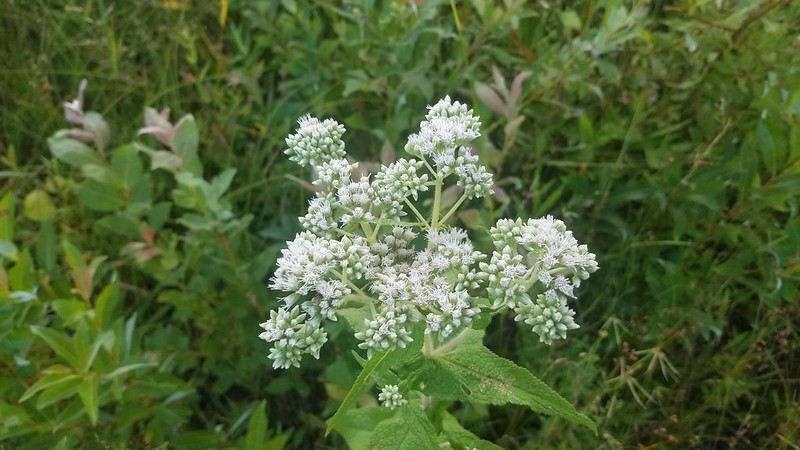
Photo Credit: Kevin Kenny / Flickr / CC BY-SA 2.0
American boneset distinguishes itself by the small white flowers it sprouts between late summer and early fall. These flowers provide pollen and nectar for bees, butterflies, and other pollinators. Once pollinated, they sprout seeds that attract songbirds.
Another cool fact: The American Boneset, which was awarded the 2003 NC Wildflower of the Year, was historically used as a medicine for the flu, fevers, and colds.
Sun: Full sun or partial shade
Soil: Clay, sand, high organic matter
Fragrance: Pleasant floral scent
Bloom time: Late summer to early fall
Water needs: Frequent standing water
Mature height: 4 to 6 feet.
Maintenance: Low
2. Black-Eyed Susan (Rudbeckia hirta)
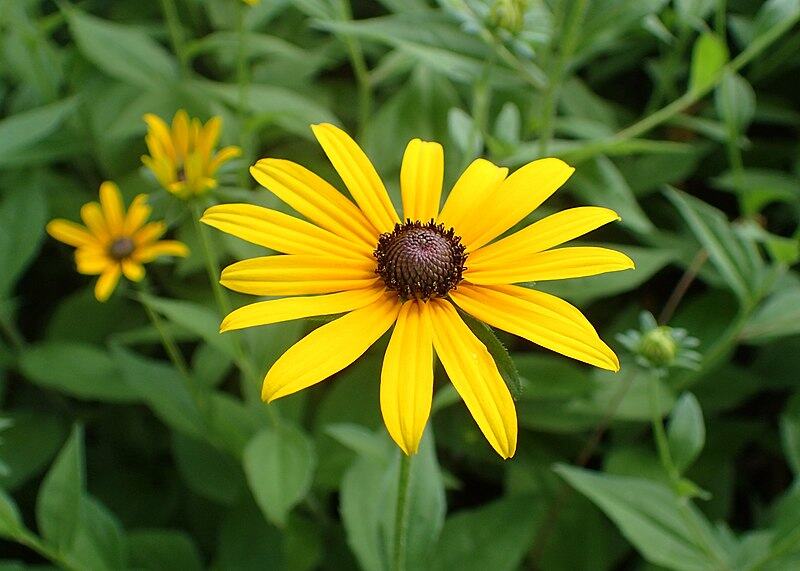
Photo Credit: Krzysztof Ziarnek, Kenraiz / Wikimedia Commons / CC BY-SA 4.0
The bright yellow black-eyed Susan is popular due to its long bloom time, giving a garden bed a long-lasting splash of color. Bees and butterflies use it as a source of both nectar and pollen, and songbirds eat their seeds when they’re ripe.
The black-eyed Susan reseeds readily, but other plants keep it in check. It adapts to numerous soils, making it easy to plant in North Carolina.
Sun: Full sun
Soil: Clay, sand, loam, acidic, moist, well-drained
Fragrance: Sweet
Bloom time: Spring, summer, early autumn
Water needs: Medium. It has moderate drought tolerance
Mature height: 1 to 3 feet.
Maintenance: Low. Can self-seed freely. Black-eyed Susan can become aggressive if given too perfect an environment and insufficient competition.
3. Cardinal Flower (Lobelia cardinalis)
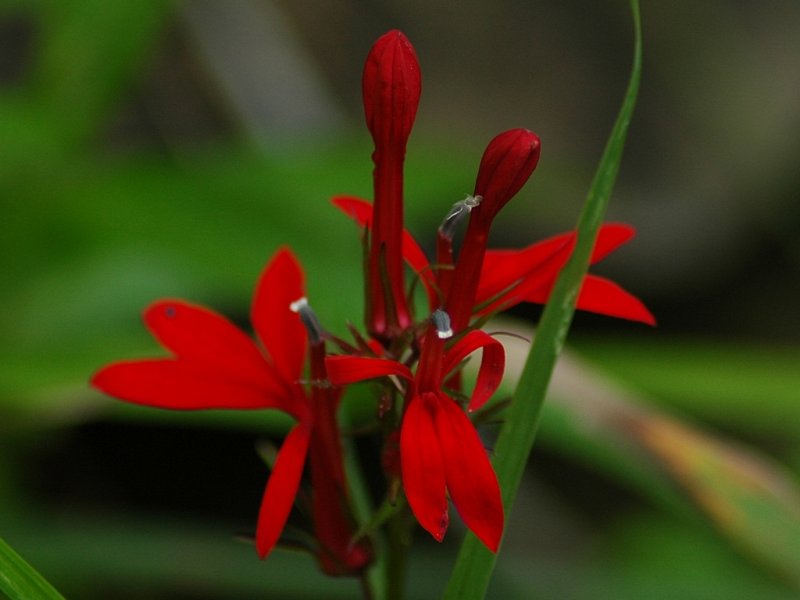
Photo Credit: linnaeus / Wikimedia Commons / CC BY 3.0
Cardinal flower sets itself apart with its brilliant red flowers, a nod to the red robes worn by Roman Catholic cardinals. Cardinal flowers are generally low-maintenance. However, they require frequent watering to maintain the moist soil they prefer. Some afternoon shade will shield them from the heat and prevent them from drying out.
While historically used for medicine, all parts of the plant are poisonous, so it’s not the best choice for parents or pet owners. The cardinal flower was selected as the 1982, 1983, and 2001 NC Wildflower of the Year.
Sun: Full sun, partial shade, full shade
Soil: Sand, loam, clay, limestone-based
Bloom time: July to October
Water needs: Medium to high
Mature height: 1-6 feet
Maintenance: Low.
4. Foamflower (Tiarella cordifolia)
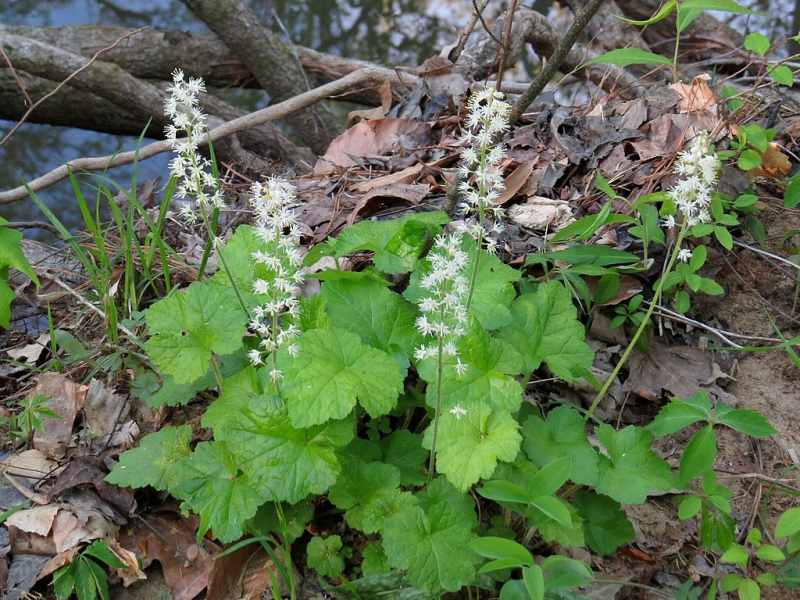
Photo Credit: Evan M. Raskin / Wikimedia Commons / CC BY 4.0
Foamflower can get up to a foot tall, making it a good ground cover. In spring, spiked flowers bloom, attracting bees, butterflies, and other pollinators. These flowers range from cream-colored to light pink.
In early summer, black fruits bloom, which can be dried. Foamflower was named the 1986 NC Wildflower of the Year.
Sun: Part to full shade
Soil: Moist, hummus-rich, well-drained soil
Bloom time: Spring
Water needs: Medium
Mature height: 5 to 12 inches
Maintenance: Low
5. Garden Phlox (Phlox paniculata)
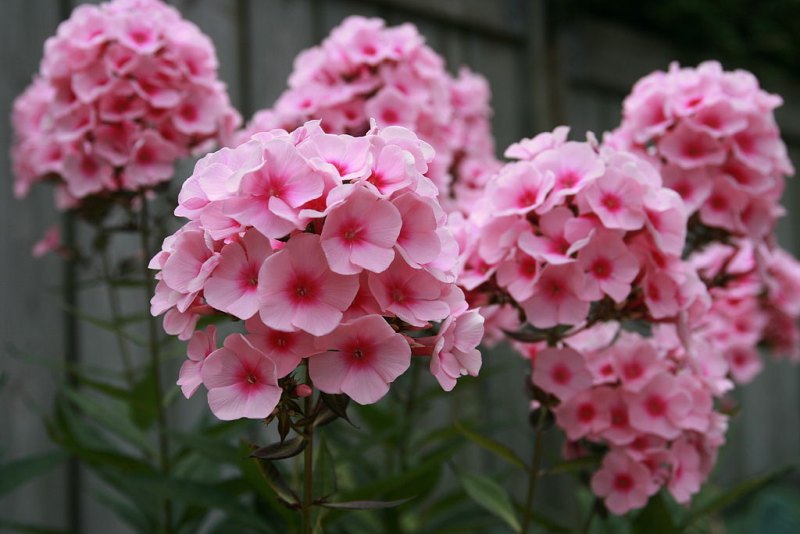
Photo Credit: Keith Pomakis / Wikimedia Commons / CC BY-SA 3.0
Garden phlox is a perennial growing in woodlands, thickets, gardens, prairies, and forests. In summer, dome-shaped pink, purple, or white flowers sprout, and the entire plant blooms in the fall. It attracts hummingbirds, butterflies, and bees.
However, garden phlox has disease and pest problems. It’s vulnerable to powdery mildew and root rot and attracts spider mites in hot and dry conditions.
Sun: Full sun to partial shade
Soil: Clay, loam, high organic matter, good drainage, moist
Bloom time: Mid-summer to mid-fall
Water needs: Water in dry summers. Avoid overhead watering.
Mature height: 2 to 4 feet.
Maintenance: Medium
6. Indian Pink (Spigelia marilandica)
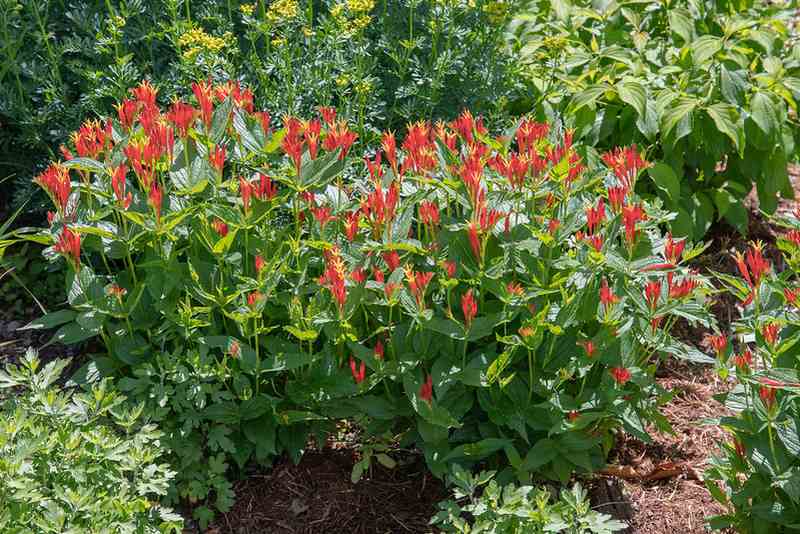
Photo Credit: Mark Levisay / Flickr / CC BY 2.0
Classified as a NC threatened species, Indian Pink stands out with its red and yellow flowers that bloom in spring. These tubular flowers see hummingbirds as their main visitor. Its fruits develop after the flowers, which provide a food source for songbirds.
Indian Pink is poisonous to humans, deer, and rabbits. It usually grows in moist woods and along wooded stream banks.
Sun: Partial shade to full shade
Soil: Moist, well-drained
Bloom time: Late Spring to Summer
Water needs: Medium
Mature height: 1-2 feet
Maintenance: Low
7. New England Aster (Symphyotrichum novae-angliae)
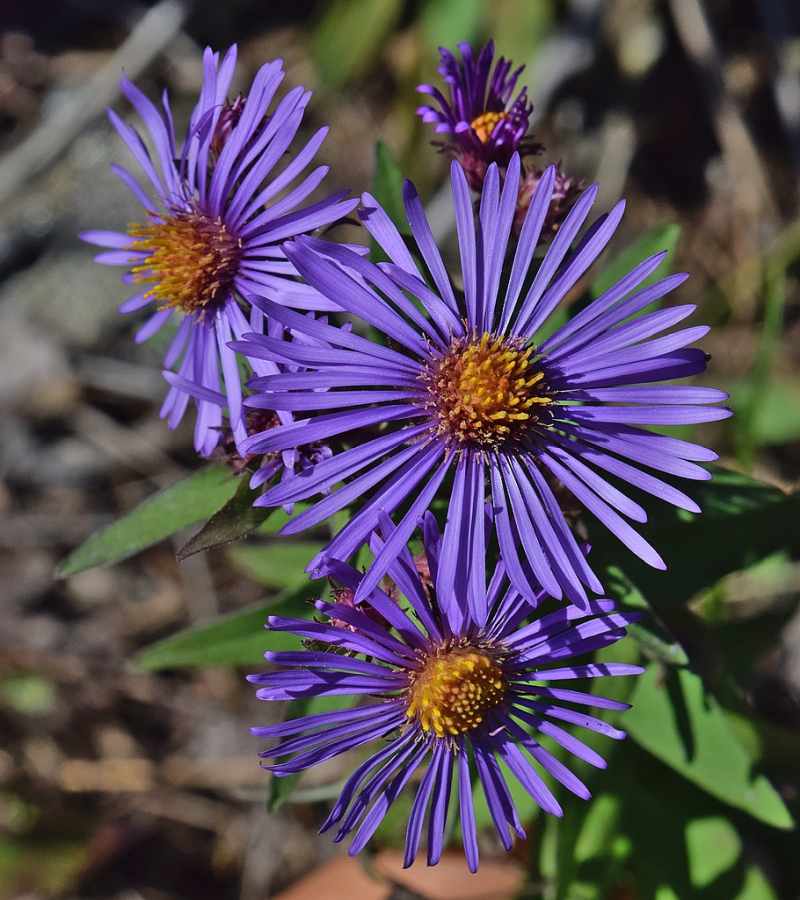
Photo Credit: The Cosmonaut / Wikimedia Commons / CC BY-SA 2.5 CA
The fabulously showy New England aster grows in moist meadows, prairies, low valleys, and stream banks. It sprouts large, purple flowers with yellow centers in late summer and early fall. These flowers attract wildlife like bees and butterflies while also making great cut flowers for arrangements.
Sun: Full sun to partial shade
Soil: Clay, high organic matter, good drainage, moist, occasionally dry
Bloom time: Late Summer and Fall
Water needs: Water weekly or when the topmost layer of soil dries out
Mature height: 3 to 7 feet
Maintenance: Medium
8. Purple Coneflower (Echinacea purpurea)
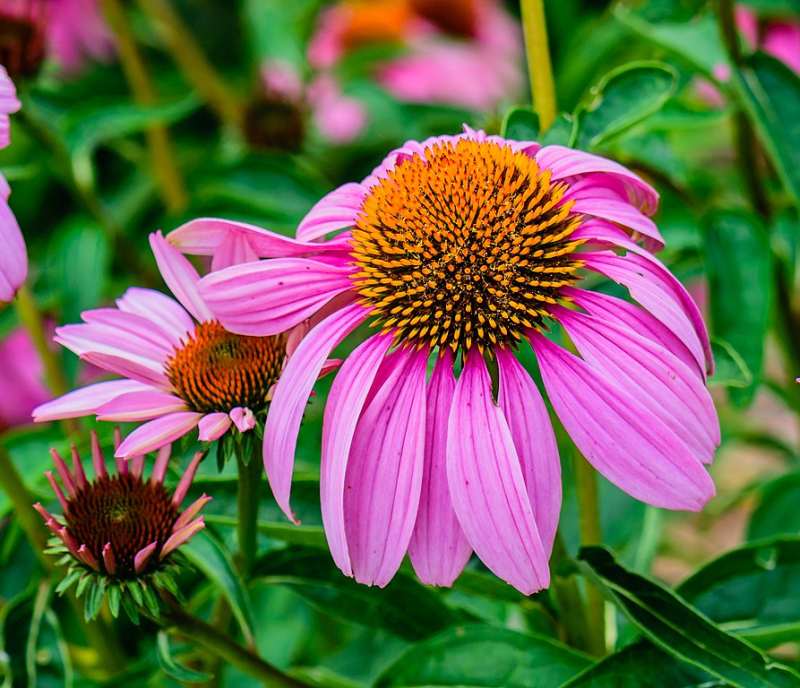
Photo Credit: PumpkinSky / Wikimedia Commons / CC BY-SA 4.0
Purple coneflowers are popular pollinator plants. They bloom pink-purple flowers with spiky cone-shaped centers. Bees, hummingbirds, and butterflies visit them in the growing season, and songbirds eat the seeds after they sprout in the fall and winter.
Purple coneflowers are favorites at the garden center. Native Americans use their roots to treat coughs and fevers, and its ingredients are still used in teas and medicines today.
Sun: Full sun to partial shade
Soil: Sandy, clay, rocky
Bloom time: April to September
Water needs: Medium
Mature height: 2 to 5 feet
Maintenance: Low
9. Swamp Milkweed (Asclepias incarnata)
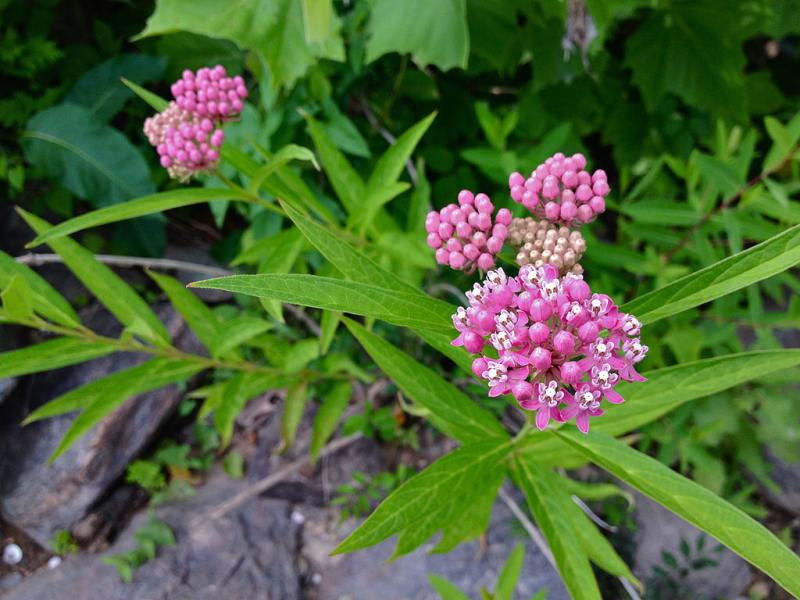
Photo Credit: Fritzflohrreynolds / Wikimedia Commons / CC BY-SA 3.0
As its name suggests, swamp milkweed likes wet, moist, and swampy areas. It grows clusters of pink or white flowers in mid to late summer. They attract bees, butterflies, and other pollinators while being deer resistant.
In 2005, the swamp milkweed was named the North Carolina Wildflower of the Year. It’s a critical host for monarch butterflies, which have declined due to habitat loss.
Sun: Full sun to partial shade
Soil: Clay, moist, wet
Bloom time: Mid to late summer
Water needs: High
Mature height: 3 to 5 feet
Maintenance: Low
10. Virginia Bluebells (Mertensia virginica)
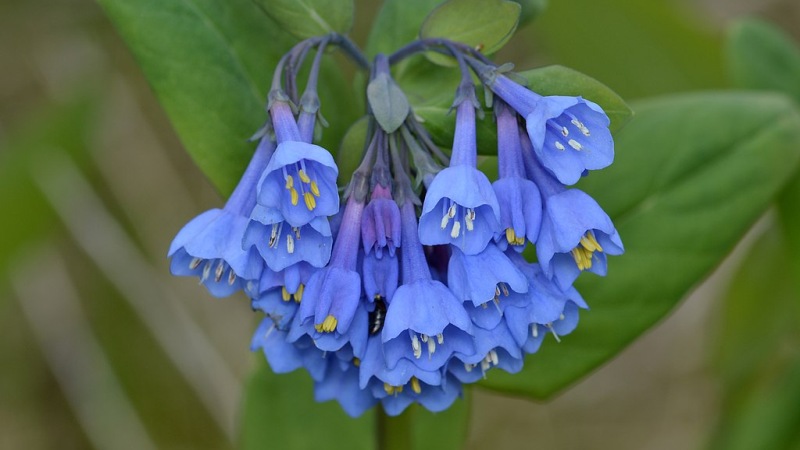
Photo Credit: Ryan Hodnett / Wikimedia Commons / CC BY-SA 4.0
Virginia bluebells bloom in spring and go dormant by late summer. Due to the sap in their petals changing pH over time, their trumped-shaped flowers change from pink to blue. Long-tongued pollinators like mason bees, digger bees, and butterflies pollinate them. Deer and rabbits avoid Virginia bluebells.
Virginia bluebells work best surrounded by later-blooming flowers, which will take over after they die. They are self-seeders, meaning they drop seeds for other Virginia bluebells to grow.
Sun: Part shade to full shade
Soil: Chalk, clay, loam, sand. Acid, alkaline, neutral. Moist but well-drained
Fragrance: Light, sweet
Bloom time: Spring
Water needs: Average. It does its best when moisture is abundant and will decline when the soil is too dry.
Mature height: 1 to 2 feet
Maintenance: Medium. This plant self-seeds but is challenging to propagate. It should be cut back after flowering.
FAQ
An annual lives for only one growing season before dying, while a perennial regrows every spring.
The best planting time is in the spring or fall, but perennials can be planted any time the ground can be worked and when there’s no danger of frost.
The biggest dangers to perennials are:
• Lack of, or too much, sunlight
• Not enough, or too much, water
• Too much or not enough fertilizer
• Weed killers
• Freeze damage
• Transplant shock
What’s Next?
Need help with finding and planting the right perennials? Contact a Wikilawn lawn care professional, and we’ll get your plants growing beautifully in no time.
Main Photo Credit: brillianthues / Flickr / Public Domain Mark 1.0